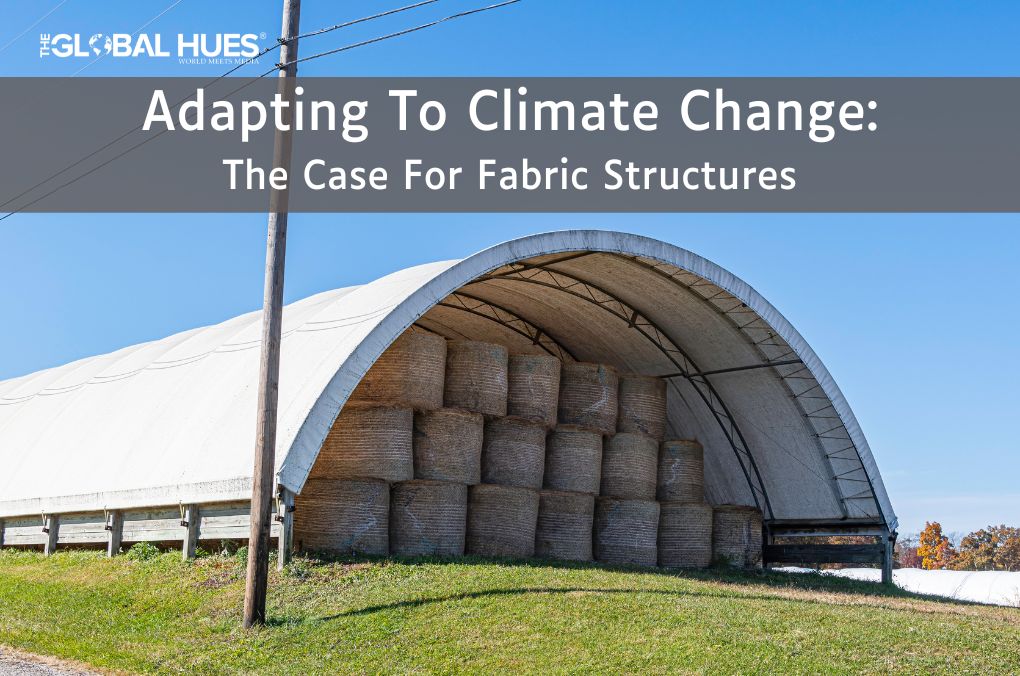The undeniable realities of climate change—including rising global temperatures, shifting weather patterns, and the increasing frequency of extreme weather events—compel societies and industries worldwide to rethink traditional methods and embrace adaptive solutions.
As the window for preventive action narrows, the spotlight has turned to innovative architectural techniques that combat these environmental shifts and offer sustainable and efficient alternatives. One such solution that is gaining traction is the use of fabric structures.
Energy Efficiency And Insulation
Fabric structures, especially when utilized as insulated fabric shelters, offer a unique combination of thermal efficiency and energy-saving capabilities.
Traditional building materials, while sturdy, often lack the versatility to adapt to fluctuating temperature conditions. However, given their lightweight design, fabric structures can be integrated with insulative materials that maintain an even internal temperature, thus reducing energy consumption.
Moreover, their flexible nature means that these structures can be designed to maximize natural light penetration during daytime hours, further decreasing the dependency on artificial lighting. This leads to energy savings and promotes a healthier indoor environment.
With the relentless progression of climate change, structures that reduce energy footprints while still providing safety and comfort are indispensable.
Speedy Construction And Mobility
One of the most remarkable features of fabric structures is their speed of installation. As climate-related disasters become more frequent, the need for rapid deployment of shelters or structures in affected areas has never been greater.
Fabric structures can be erected in a fraction of the time it takes for traditional buildings, providing immediate relief in emergencies.
Additionally, these structures’ modular and lightweight nature means they can be easily disassembled, transported, and reassembled in different locations. This mobility offers adaptability to changing environmental conditions, ensuring communities remain resilient and can quickly rebound after adverse events.
Durability Against Extreme Weather
Despite their seemingly delicate nature, modern fabric structures are engineered to withstand extreme weather conditions, from heavy snow loads to powerful winds.
These structures are designed with a tensioned membrane, ensuring they remain taut and resistant to fluctuating pressures. The innovative design also enables these structures to deflect wind rather than resist it, reducing the chance of damage.
Additionally, water and snow slide off their curved surfaces, minimizing accumulation and its associated risks. Such resilience makes fabric structures attractive for regions increasingly plagued by climate-induced weather extremes.
Eco-Friendly Materials And Sustainability
A crucial consideration in the age of climate change is the environmental footprint of construction materials. Fabric structures often employ materials that are durable and recyclable. This commitment to sustainability ensures a reduced environmental impact over the structure’s life cycle.
Moreover, many fabric structures use materials that are treated to be UV resistant, further prolonging their lifespan and decreasing the need for replacements. As industries strive for greener solutions worldwide, fabric structures emerge as a frontrunner in eco-friendly architectural options.
Cost-Effectiveness And Economic Viability
In addition to their environmental benefits, fabric structures present a compelling economic argument. Their lightweight design means reduced foundational requirements, leading to savings in construction costs. The rapid installation times also translate to labor savings.
Furthermore, the energy-efficient characteristics of these structures, combined with reduced maintenance requirements due to their durability, mean significant savings in operational costs over time. For communities or businesses seeking budget-friendly yet sustainable architectural solutions, fabric structures provide an excellent option.
Versatility In Design And Aesthetics
Beyond their pragmatic benefits, fabric structures offer unparalleled versatility in design, allowing for a fusion of functionality and aesthetics.
Unlike rigid construction materials that may limit creativity, fabric’s malleable nature makes it possible to conceptualize and realize a myriad of shapes, sizes, and configurations. This means architects and designers can craft structures tailored to a community or organization’s specific needs and desires.
Moreover, fabric structures can be effortlessly integrated with other materials, creating a harmonious blend of textures and visual appeal. Their translucency can be adjusted, which enables a play with light and shadow, further enhancing their aesthetic allure.
As architectural design leans towards bespoke and adaptive solutions, the adaptability of fabric structures provides an edge in melding utility with unparalleled visual grace.
Environmental Harmony And Integration
Fabric structures, due to their lightweight and adaptable design, often blend seamlessly with natural environments.
Unlike concrete or metal structures that can appear obtrusive, fabric can complement an area’s natural hues and tones, ensuring minimal visual disruption. This harmonious integration is pivotal, especially in ecologically sensitive zones or scenic locales where preserving the natural vista is crucial.
Moreover, the porous nature of some fabric materials enables a more natural airflow, fostering a sense of unity with the outdoors even when sheltered. In essence, these structures can be designed to serve as an extension of the environment rather than an imposition upon it.
Fabric structures provide the blueprint for a sustainable architectural future that resonates with the environment.
Conclusion
Fabric structures represent a holistic approach to sustainable building for a future under the spectre of climate change. By effortlessly blending energy efficiency, rapid deployment, aesthetic versatility, and harmonious integration with the environment, these structures provide a compelling answer to the challenges of the modern world.
As societies globally reconfigure their responses to an unpredictable climate, fabric structures stand as a testament to human adaptability and a beacon for sustainable design and living.




